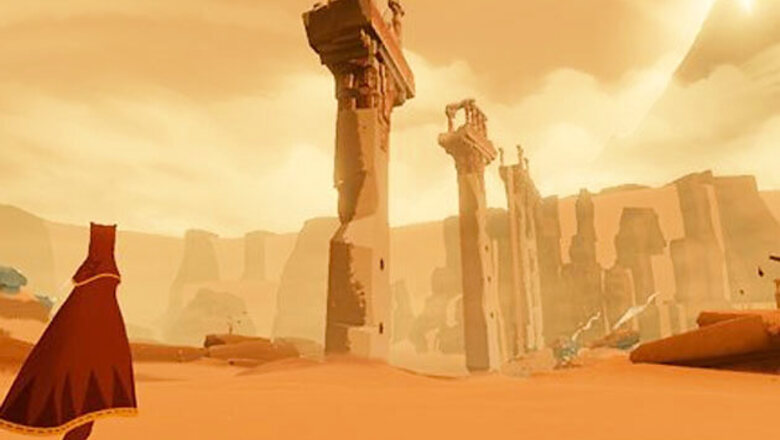
views
The goals in video games are usually well-defined: Kill the bad guys. Rescue the princess. Knock the pigs off their pedestals.
But there's a whole underground movement of independent designers making games with less well-defined goals. They may look familiar on the surface - especially to fans of running-and-jumping "platform" games like Super Mario Bros. - but the old-school mechanics are a way to draw players into deeper mysteries.
The three "indie" games described here are positively laid-back when compared with the slam-bang action of a typical AAA release. But they may stick with you longer, and you can get all three for less than the price of one Call of Duty game.
Fez (Polytron, for the Xbox 360, $10) looks, at first glance, like a throwback to the 8-bit glory days of the original Nintendo Entertainment System. You control a blobby collection of pixels named Gomez bouncing around a two-dimensional town. But you soon discover there's a third dimension involved -and you have to constantly shift perspective to negotiate Gomez's ever-expanding universe.
It isn't an original idea: The 2D-to-3D gimmick has driven games like Paper Mario, Echochrome and Crush. And once you get used to looking at the landscape from different angles, it's fairly easy to find the dozens of golden cubes scattered about.
So lead designer Phil Fish takes it one step further. To really complete Fez, you need to tackle a few dozen puzzles that are stubbornly vague. What do the hieroglyphs on the walls mean? What are these constellations trying to tell me? Why won't that owl stop staring at me?
Some of the brainteasers deliver that "a-ha!" moment when you solve them. A few initially struck me as impossibly obtuse - that's before a friend would point out a solution that was staring me in the face the whole time. But there's no shame in asking friends for help with Fez. Sometimes, all you need is a different perspective.
Three and a half stars out of four.
Journey (That Game Company, for the PlayStation 3, $14.99) is puzzling from start to finish. Your character, a nameless, voiceless nomad, is stranded in a desert. After a few minutes you see, in the distance, a mountaintop from which a spear of light shines. As you head toward the light, the shifting sands give way to massive ruins, an underwater cavern and an arctic wasteland, presented in spare yet vivid graphics.
The controls are simple enough for even a complete newcomer to video games. You can walk, you can jump, and you can chirp out a little musical note. Those chirps are the only means to communicate with the other pilgrims you meet - who are avatars of the other humans out there playing Journey at the same time. You don't need to team up, but it's oddly comforting to have a companion during such a desolate trek.
Journey only takes two or three hours to finish, and it's never so challenging that you'll get stuck. But its beautiful images, gorgeous music and ambiguous ending will haunt you.
Three and a half stars.
Closure (Eyebrow Interactive, for the PS3, $14.99) is a 2-D, black-and-white platform game with a devious twist: You can only step on areas that are illuminated. If you walk into an unlit space, you disappear into the abyss.
Thus, the key to each level is to light up a safe route to the exit. Sometimes you have to rotate stationary lamps; other times, you have glowing bulbs you can carry or insert into moving platforms. And in some cases you have to figure out how to use the darkness to your advantage.
The guinea pigs here are three people trapped in a rundown factory, a creepy forest and an abandoned carnival, and if you get stuck in one level you can switch to a different character. With dozens of puzzles, there's enough here to challenge even the craftiest gamer. But even players who don't make it all the way through "Closure" will relish its nightmarish images and eerie soundtrack.
Three stars.




















Comments
0 comment